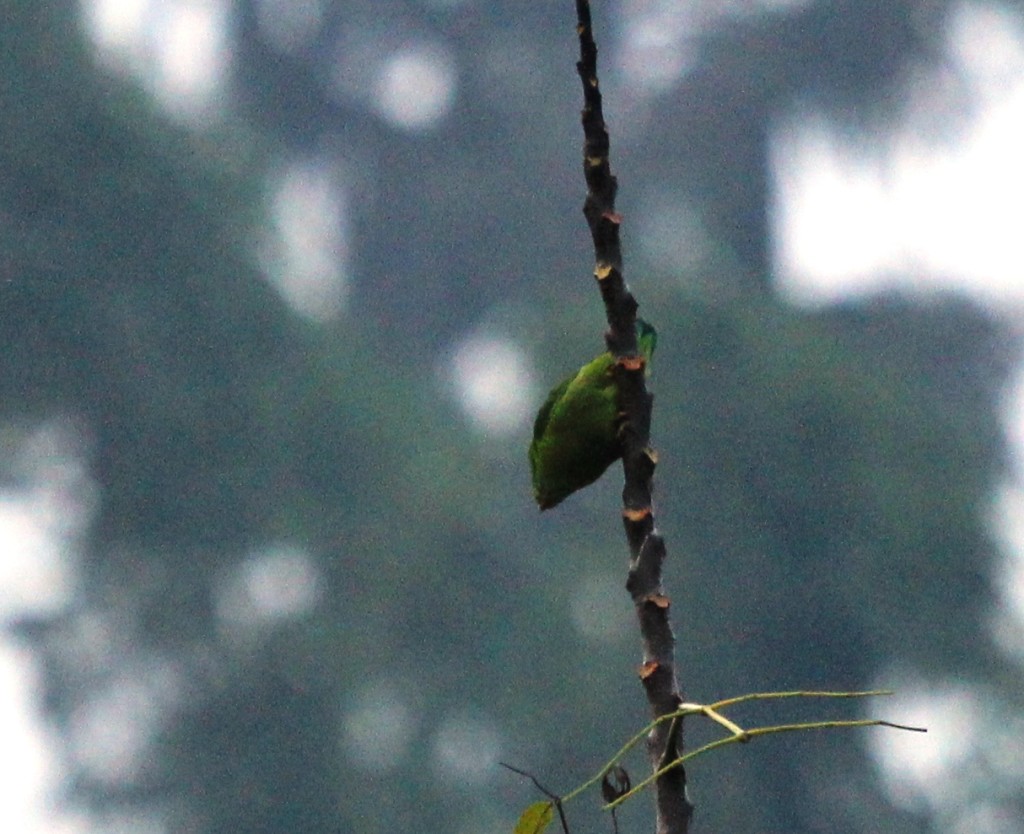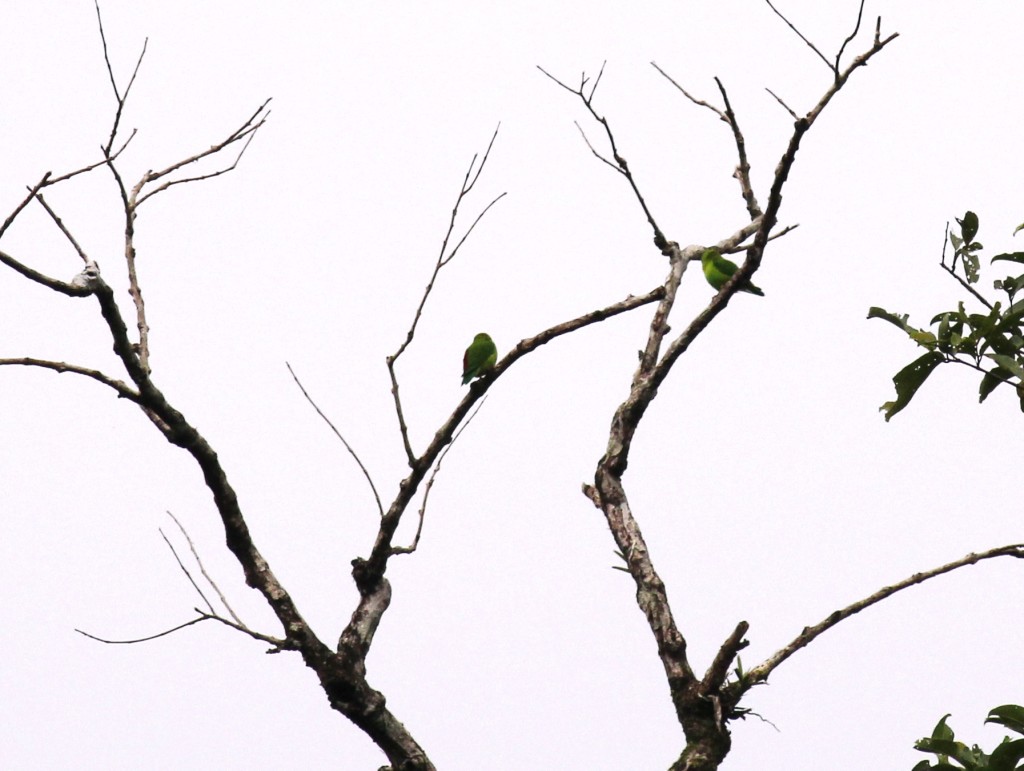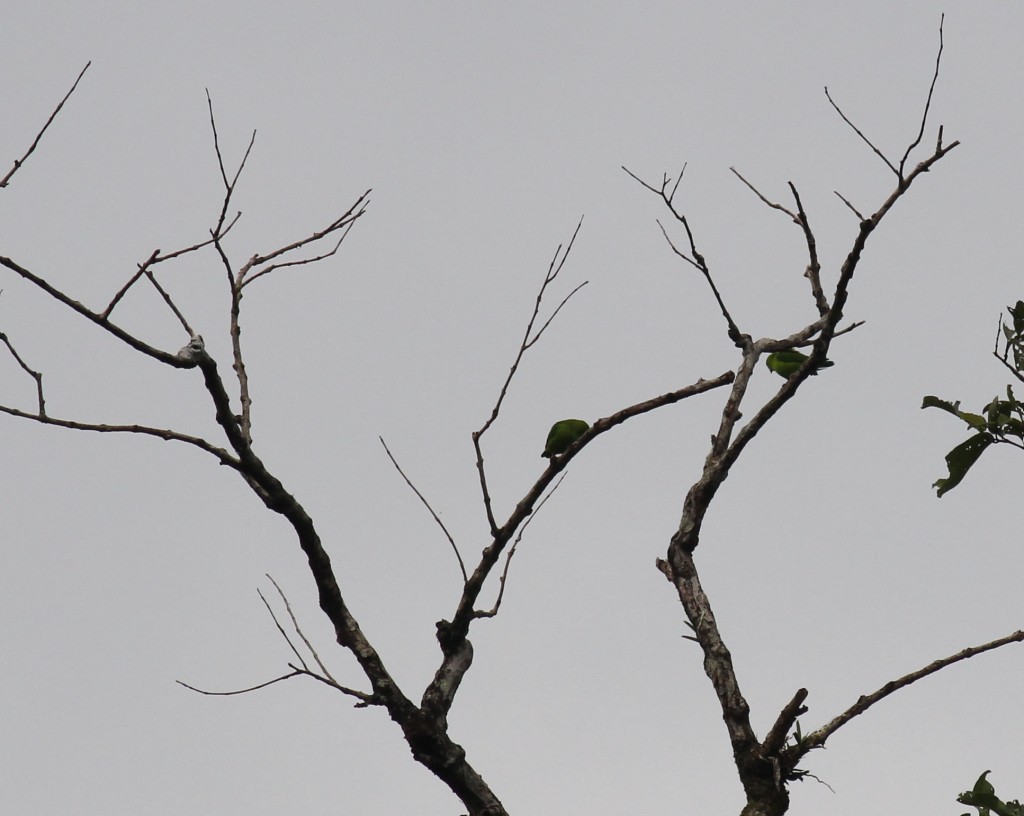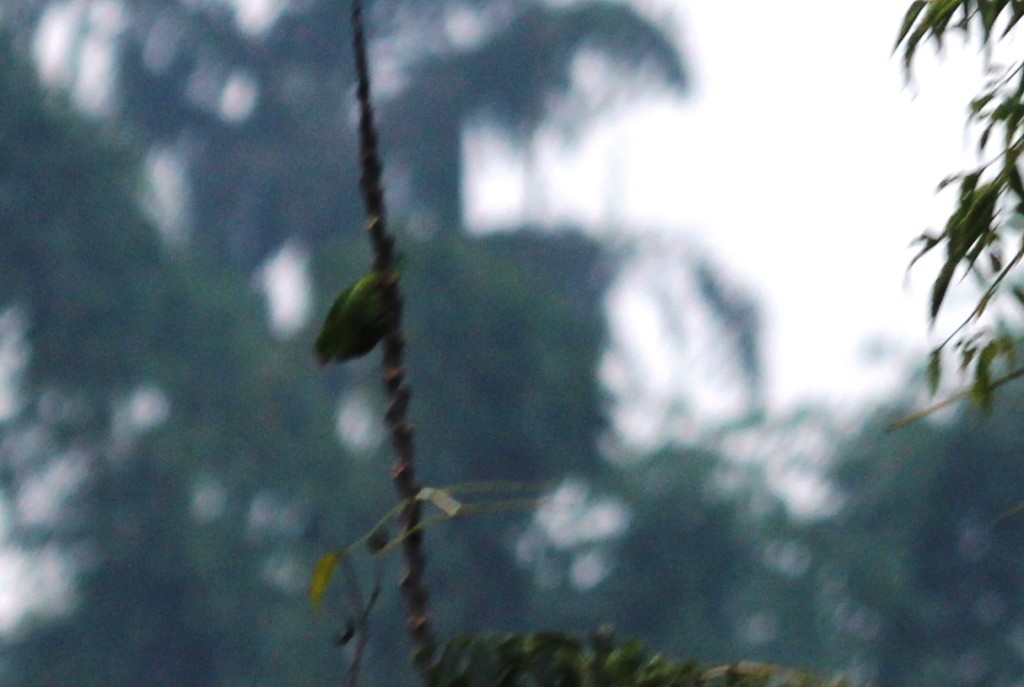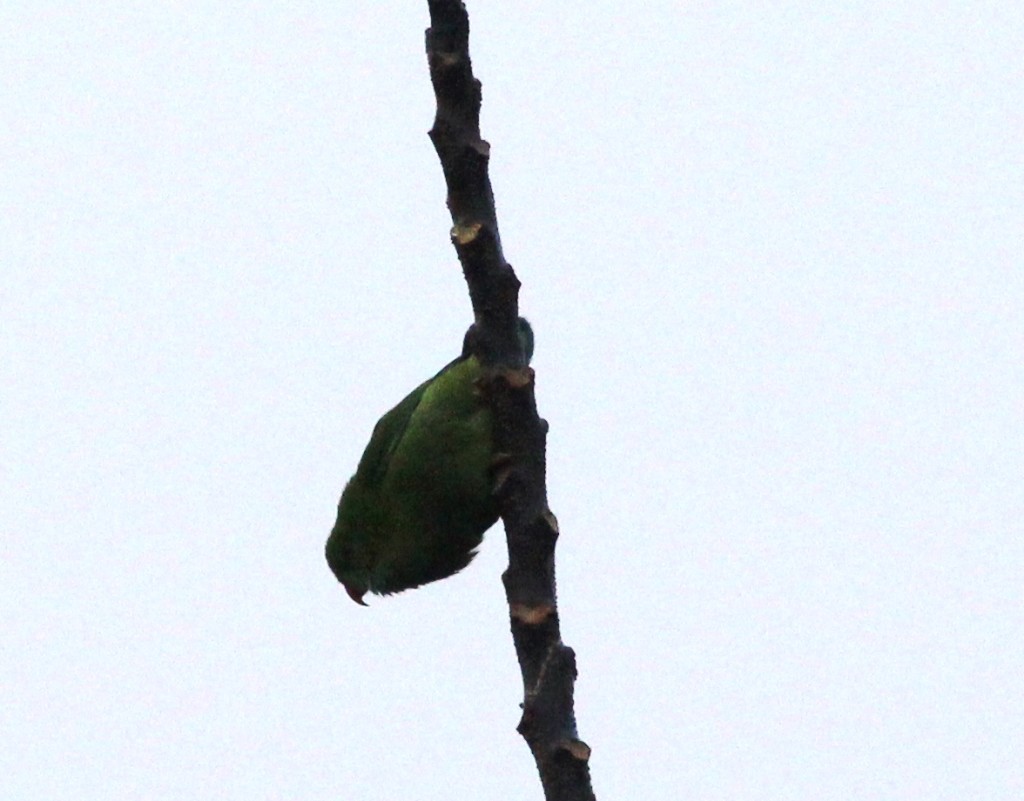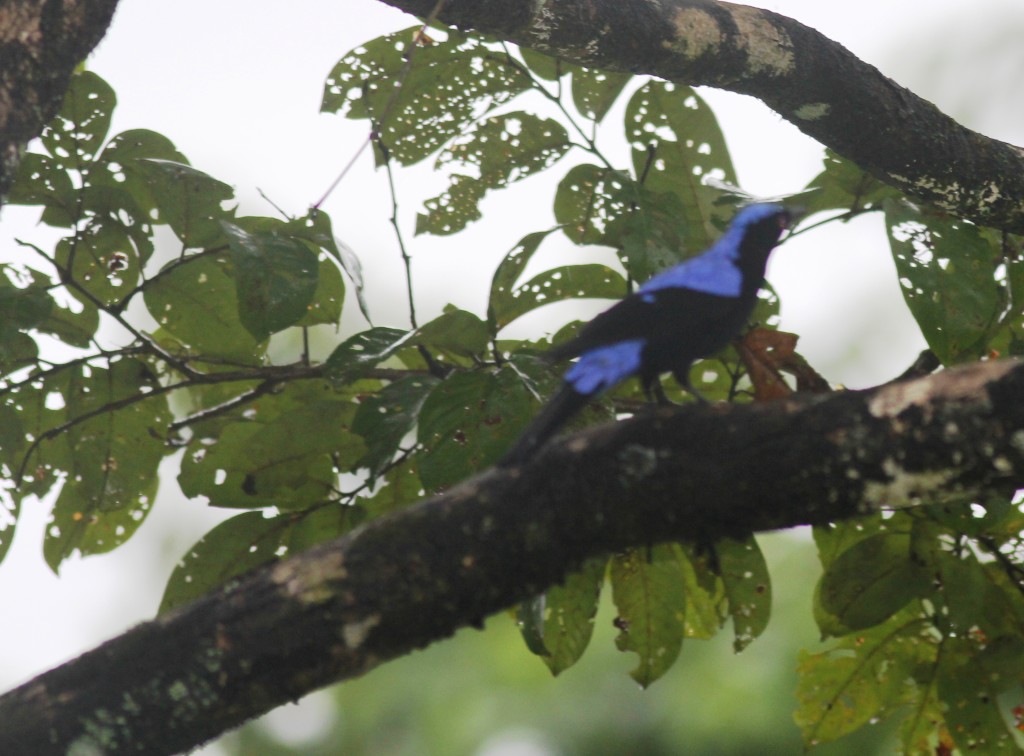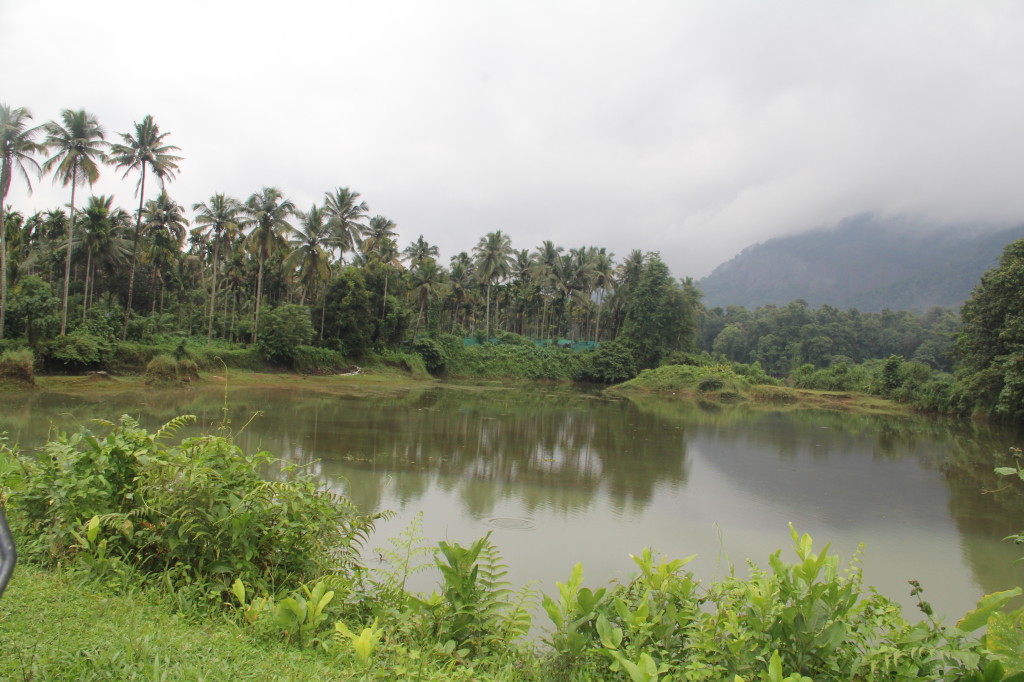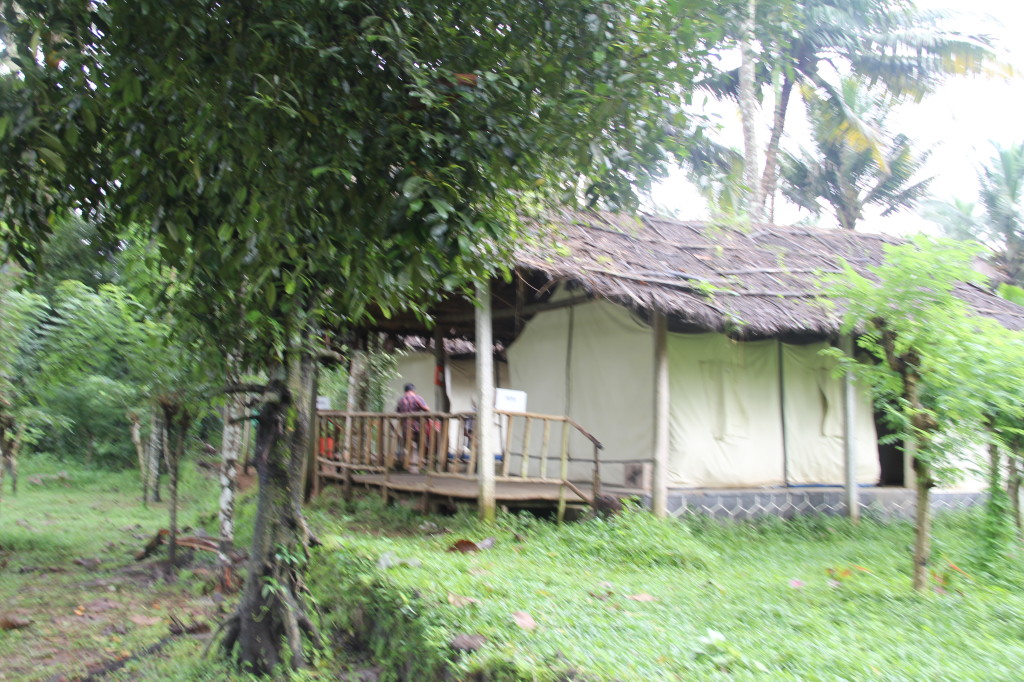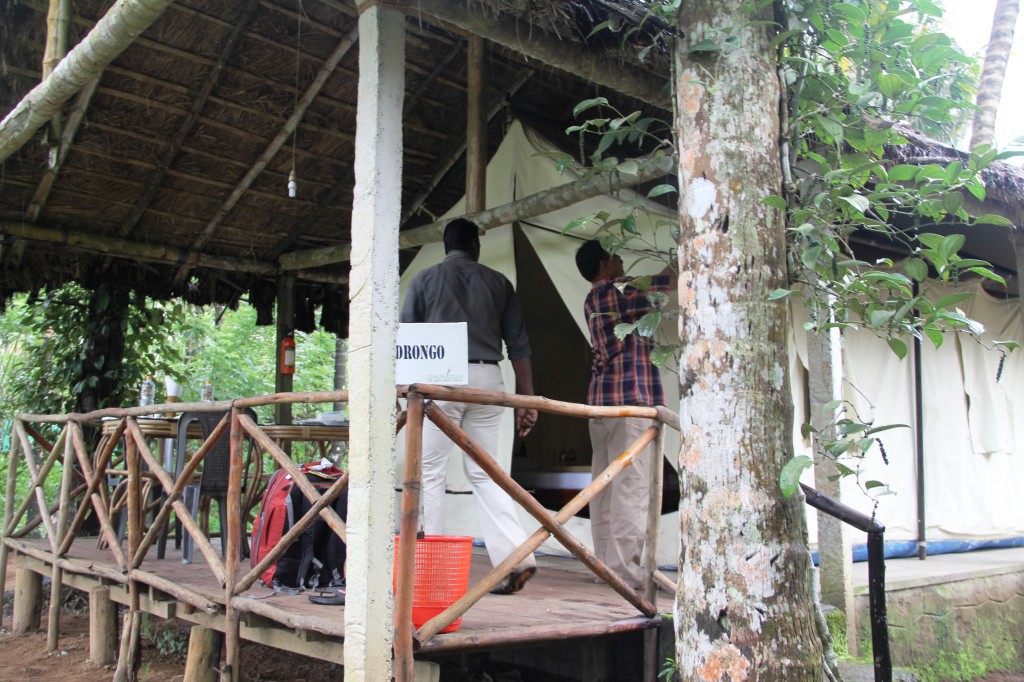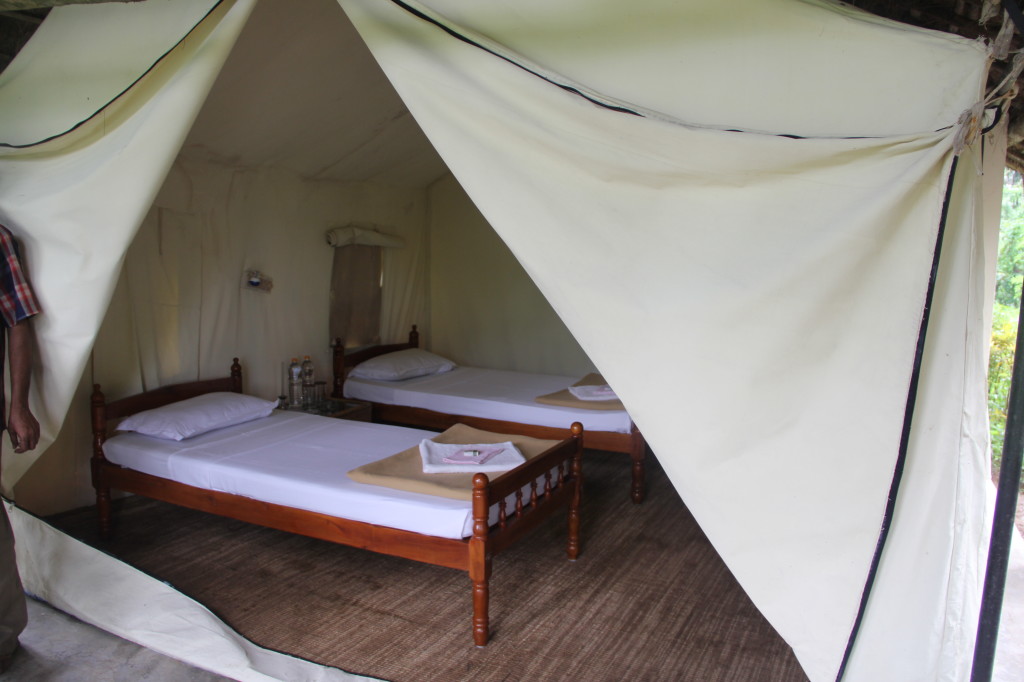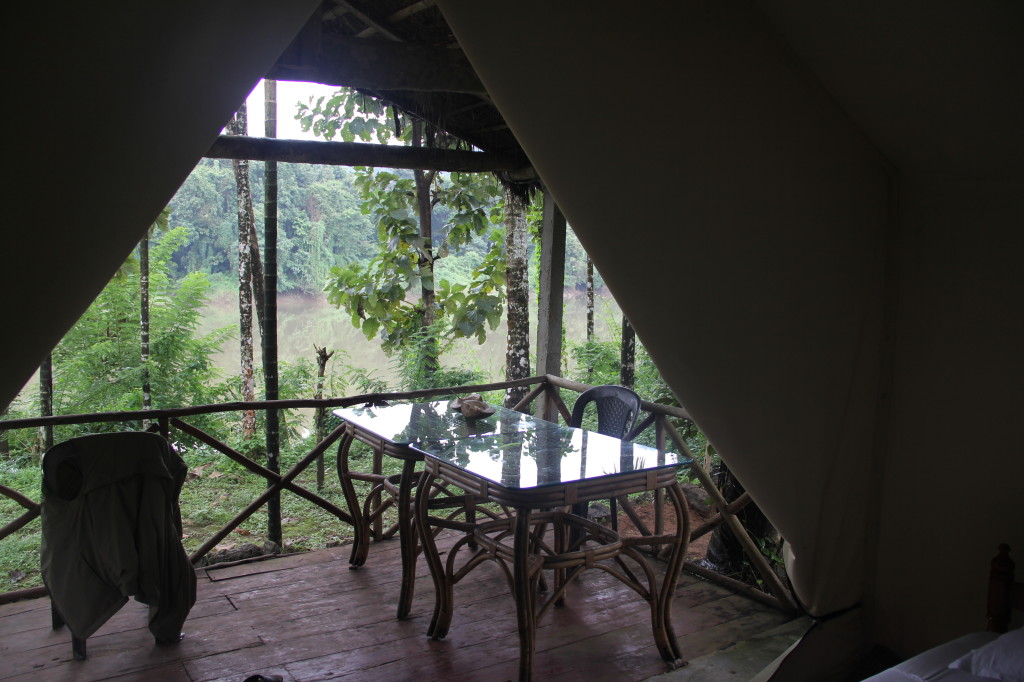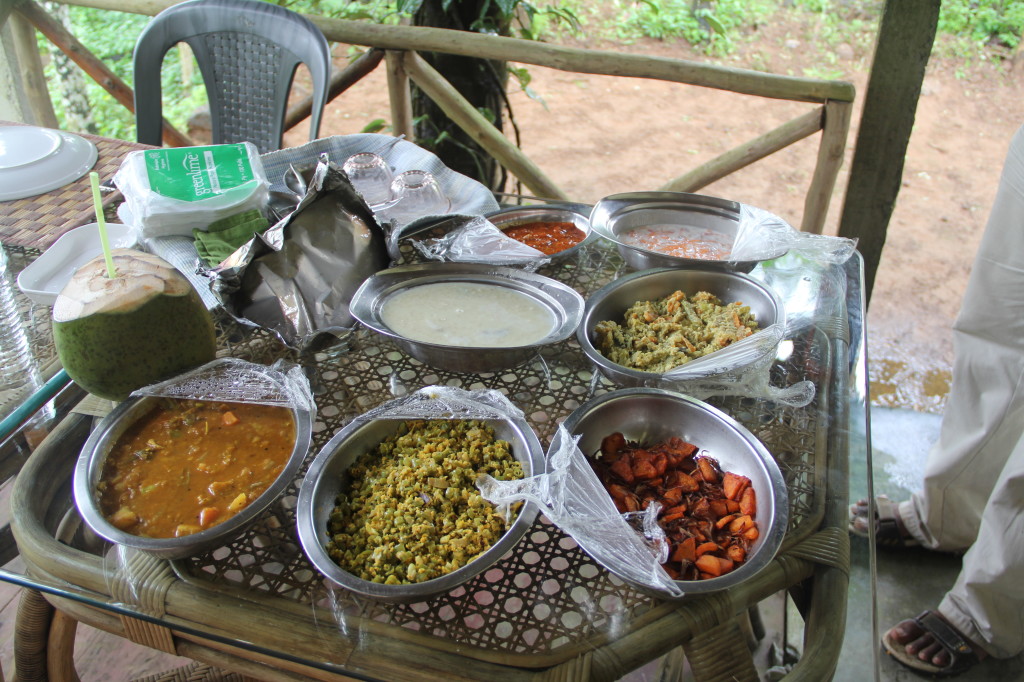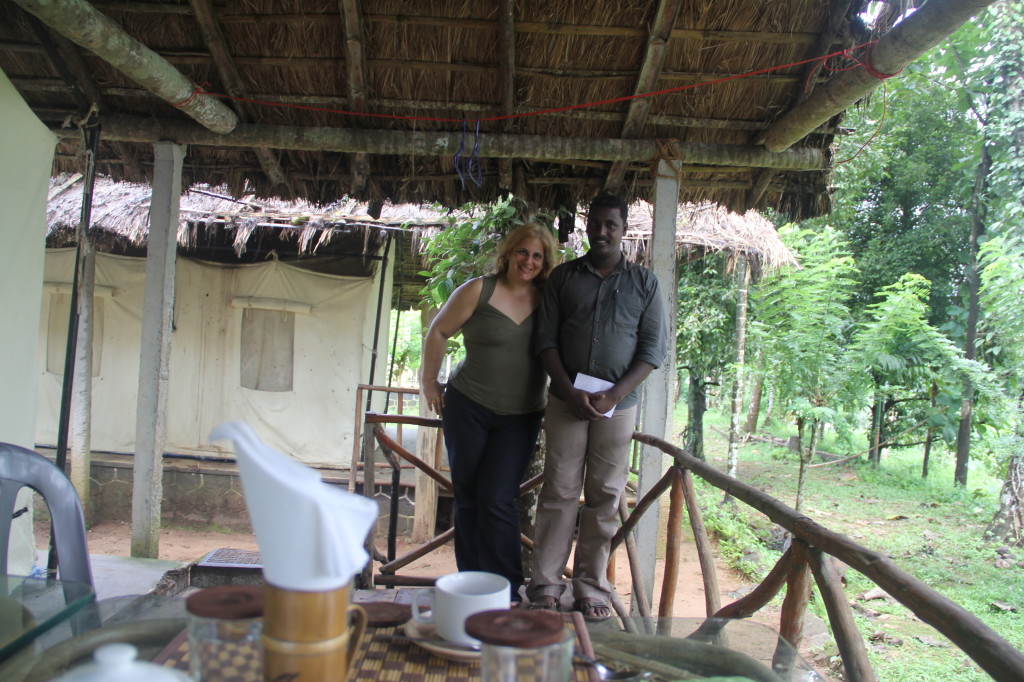The Vernal Hanging Parrot (Loriculus vernalis) is a small parrot which is a resident breeder in the Indian Subcontinent and some other areas of Southeast Asia. It undergoes local movements, driven mainly by the availability of the fruit, seeds, buds and blossoms that make up its diet. They frequent the Banyan tree for the fruit and Plantain trees for the nectar from the flowers.
This is a small, mainly green hanging parrot, only 14 cm long with a short tail. The adult male has a red rump and bill, and blue throat patch. The female has a green patch. Vernal Hanging Parrot is a bird of dry jungle and cultivation. It nests in holes in trees, laying 2-4 white eggs. Immature birds have a duller rump, and lack the throat patch. Vernal Hanging Parrot is less gregarious than some of its relatives, and is usually in small groups outside the breeding season. Its flight is swift and direct, and the call is a raucous chattering.
Since I couldn’t get a close up, here’s the Wikipedia one.
With a such a large range, this diminutive parrot will be on most national park’s bird lists from the Western Ghats of Southern India (Central Asia award) to Thailand, Laos & Vietnam (South-east Asia award). So far, I have seen them in Thattekad and Wayanad.
.
At least they are not as shy as some other parrots and will perch out in the open………….albeit a bit far from my camera!

